This article has been reviewed according to Science X's editorial process and policies. Editors have highlighted the following attributes while ensuring the content's credibility:
fact-checked
reputable news agency
proofread
Biologists in slow and steady race to help North America's largest and rarest tortoise species
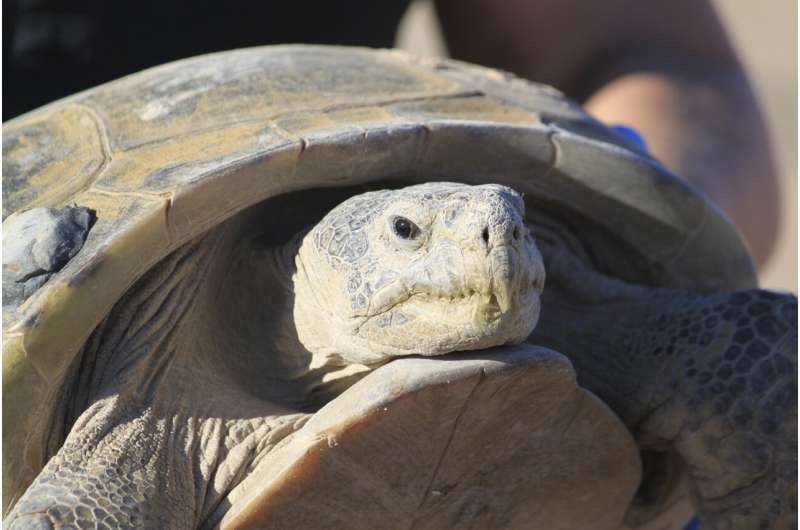
While the average lifespan of North America's largest and most rare tortoise species is unknown, biologists have said it could span upward of a century.
So saving the endangered species is a long game—one that got another nudge forward Friday as U.S. wildlife officials finalized an agreement with Ted Turner's Endangered Species Fund that clears the way for the release of more Bolson tortoises on the media mogul's ranch in central New Mexico.
The "safe harbor agreement" will facilitate the release of captive tortoises on the Armendaris Ranch to establish a free-ranging population. U.S. Fish and Wildlife Service Director Martha Williams said the agreement, which offers private landowners protections from regulations, can serve as a model as officials look for more innovative ways to work within the Endangered Species Act.
Dozens of people gathered for the release Friday of 20 more adult tortoises on the property, which is already home to 23 of them as well as dozens of juvenile ones. With the sun high in the sky and temperatures nearing 90 degrees (32 degrees Celsius), the release was held off until the evening to ensure their well-being.
The tortoises usually spend about 85% of the time in their earthen burrows, which in some cases can be about 21 yards (20 meters) long.
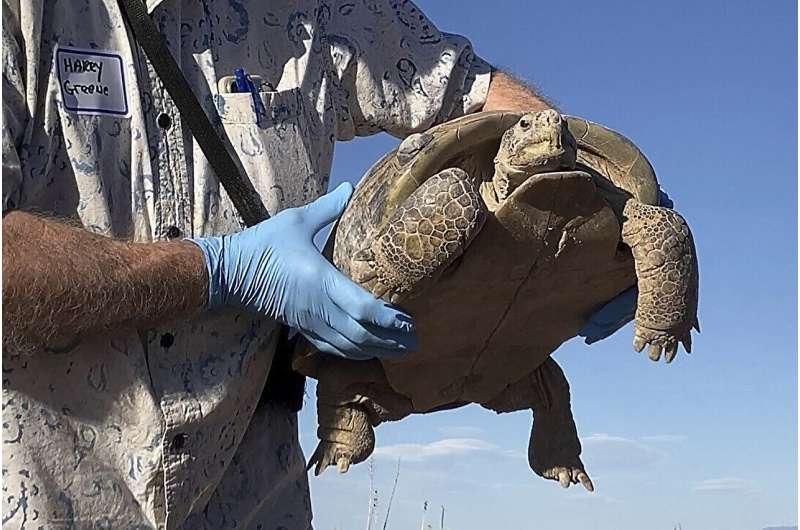
Shawn Sartorius, a field supervisor with the Fish and Wildlife Service, said the results of the breeding and restoration efforts for the slow-reproducing and long-lived animals will not be known in his lifetime.
"What we're doing here is establishing a population here that can be handed off to the next generation," Sartorius said.
It's a step toward one day releasing the tortoise more broadly in the Southwest as conservationists push the federal government to consider crafting a recovery plan for the species. The tortoise is just the latest example of a growing effort to find new homes for endangered species as climate change and other threats push them from their historic habitats.
Now found only in the grasslands of north-central Mexico, the tortoise once had a much larger range that included the southwestern United States. Fossil records also show it was once present it the southern Great Plains, including parts of Texas and Oklahoma.
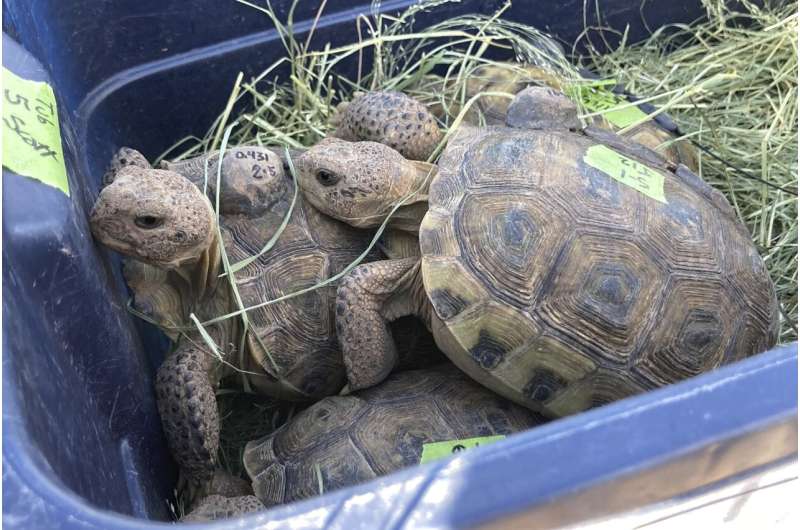
The wild population in Mexico is thought to consist of fewer than 2,500 tortoises, and experts say threats to the animals are mounting as they are hunted for food and collected as pets. Their habitat also is shrinking as more desert grasslands are converted to farmland.
While it's been eons since the tortoises roamed wild in what is now New Mexico, Mike Phillips, director of the Turner Endangered Species Fund, said it's time for biologists to reconsider what ecological reference points should matter most when talking about the recovery of an imperiled species.
Climate change is reshuffling the ecological deck and changing the importance of historical conditions in the recovery equation, Phillips said. He pointed to the case of the tortoise, noting that suitable habitat is moving north again as conditions in the Southwestern U.S. become drier and warmer.
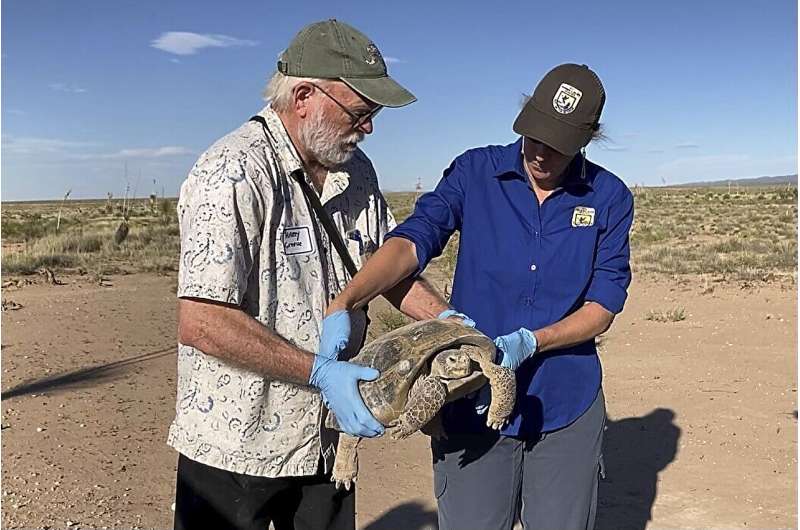
Absent a willingness by wildlife managers to think more broadly, he said, species like the Bolson tortoise could have a bleak future.
"It would seem in a recovery context, historical range should be considered. Prehistoric range sometimes matters too," he said in an interview. "But most importantly, future range—because recovery is all about righting a wrong, it's about improving conditions. The future is what is of great relevance to recovery."
Sartorius, of the U.S. Fish and Wildlife Service, agreed, saying managers can't look narrowly at historic range and still keep animals like the tortoise on the planet.
The question that biologists have been trying to answer is whether the Armendaris Ranch makes for a good home.
So far the ranch, spanning more than 560 square miles (1,450 square kilometers) is proving to be an ideal spot. The landscape is similar to that where the tortoises are found in Mexico, and work done on the ranch and at the Living Desert Zoo and Gardens in Carlsbad has resulted in more than 400 tortoises being hatched since 2006.
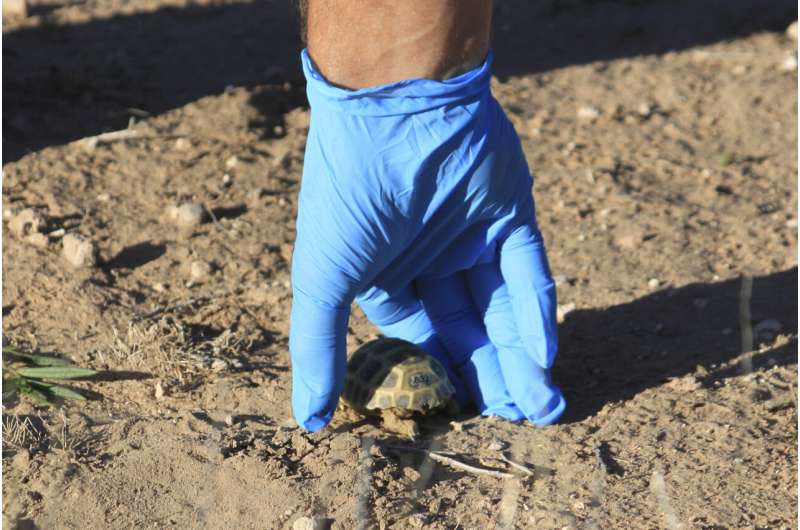
In all, the Turner Endangered Species Fund and its partners have been able to grow the population from 30 tortoises to about 800, said Chris Wiese, who leads the project at the Armendaris Ranch.
"The releases are the essential step to getting them back on the ground and letting them be wild tortoises," she said. "To us, this is the pinnacle of what we do."
The tortoises released Friday will be able to roam freely in the 16.5-acre (6.6-hectare) pen like they would in the wild. They are outfitted with transponders so they can be tracked, and wildlife managers will check in on them once a year.
Depending on weather conditions and forage availability, it can take a few years or more for a hatchling to reach just over 4 inches (110 millimeters) long. They can eventually grow to about 14.5 inches (370 millimeters).
-
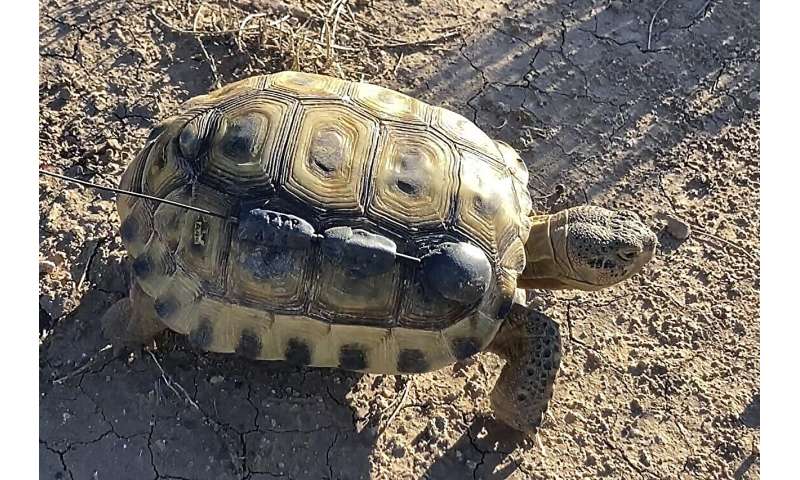
A Bolson tortoise is seen at Armendariz Ranch in Engel, New Mexico, on Friday, Sept. 22, 2023. Credit: AP Photo/Susan Montoya Bryan -
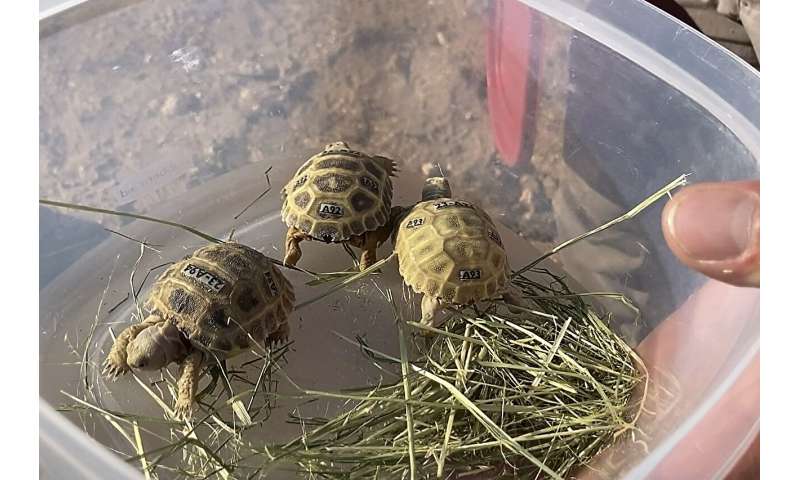
Young Bolson tortoises are held in a plastic container before being released at Ted Turner's Armendaris Ranch in Engle, N.M., on Friday, Sept. 22, 2023. The Turner Endangered Species Fund has been working to built a population of the tortoises for more than two decades in hopes of one day releasing them into the wild as part of a recovery effort. Credit: AP Photo/Susan Montoya Bryan -
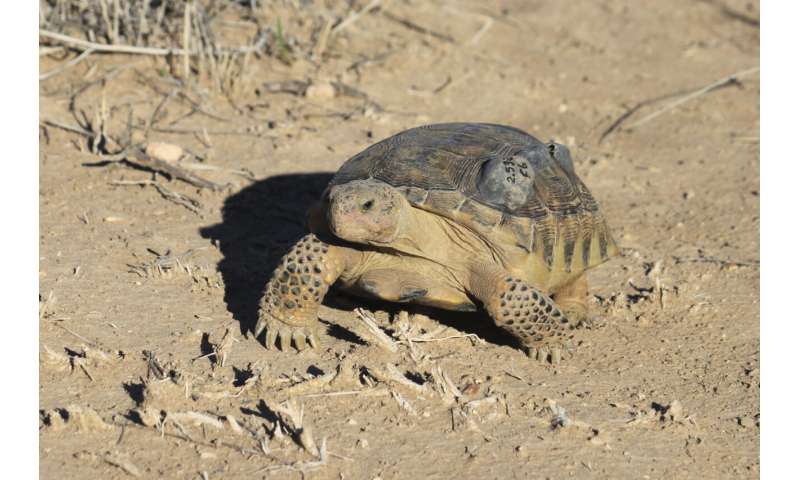
An endangered Bolson tortoise explores its new home after being released on Ted Turner's Armendaris Ranch in Engle, N.M., on Friday, Sept. 22, 2023. The tortoises were placed on the endangered species list in 1979 and the U.S. Fish and Wildlife Service is planning to begin crafting a recovery plan for the species. Credit: AP Photo/Susan Montoya Bryan -
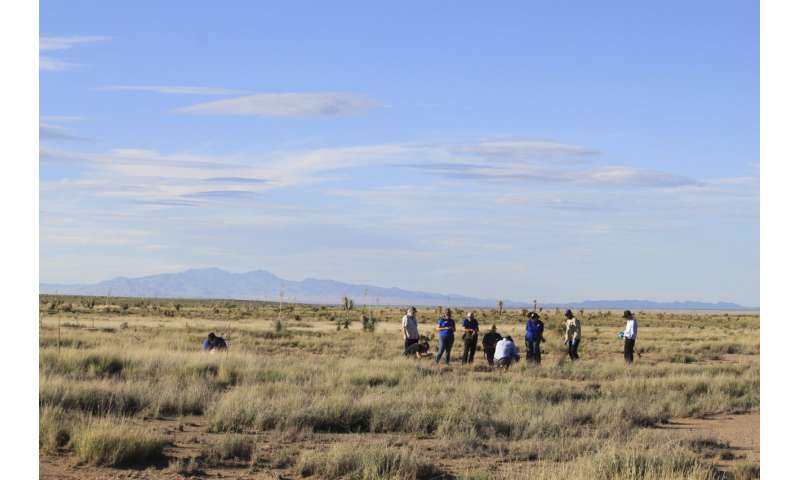
A group of state and federal wildlife officials help release nearly two dozen Bolson tortoises at Ted Turner's Armendaris Ranch in Engle, N.M., on Friday, Sept. 22, 2023. The tortoises were placed on the endangered species list in 1979 and the U.S. Fish and Wildlife Service is planning to begin crafting a recovery plan for the species. Credit: AP Photo/Susan Montoya Bryan -
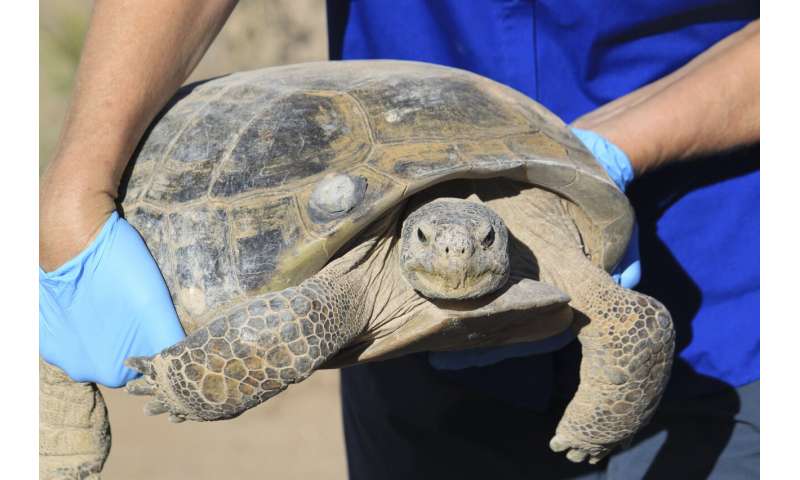
A U.S. Fish and Wildlife Service employee holds Gertie, an endangered Bolson tortoise that has been a key part of the captive breeding program, at Ted Turner's Armendaris Ranch in Engle, N.M., on Friday, Sept. 22, 2023. The Turner Endangered Species Fund has been working to build a population of the tortoises for more than two decades in hopes of one day releasing them into the wild as part of a recovery effort. Credit: AP Photo/Susan Montoya Bryan -
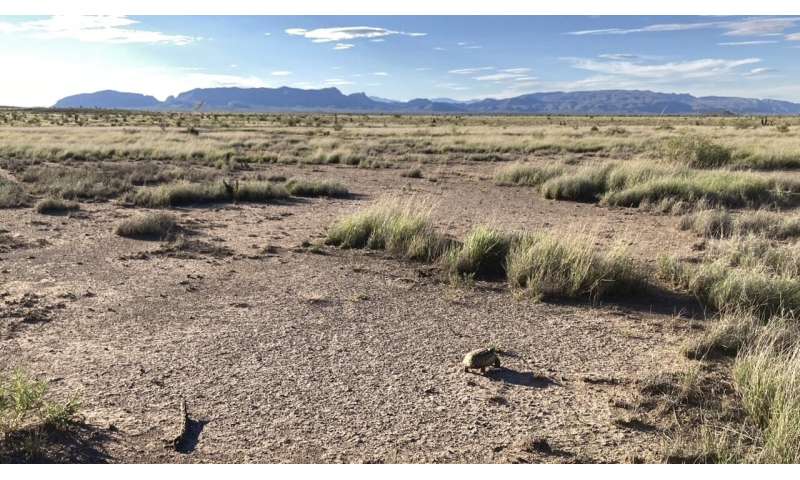
An endangered Bolson tortoise explores its new home after being released on Ted Turner's Armendaris Ranch in Engle, N.M., on Friday, Sept. 22, 2023. The tortoises were placed on the endangered species list in 1979 and the U.S. Fish and Wildlife Service is planning to begin crafting a recovery plan for the species. Credit: AP Photo/Susan Montoya Bryan -
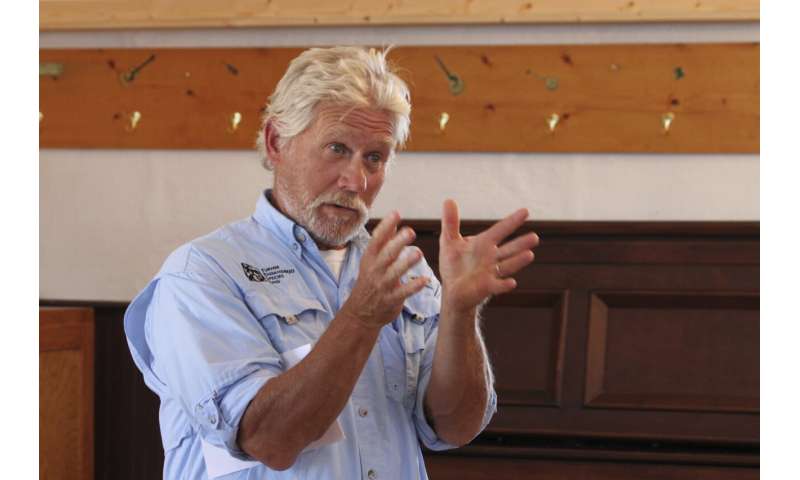
Mike Phillips, director of the Turner Endangered Species Fund, talks to a crowd of state and federal wildlife managers at Ted Turner's Armendaris Ranch in Engle, N.M., on Friday, Sept. 22, 2023. The crowd gathered to release nearly two dozen endangered Bolson tortoises into a pen on the ranch, in preparation for one day letting the population expand into the wild. Credit: AP Photo/Susan Montoya Bryan -
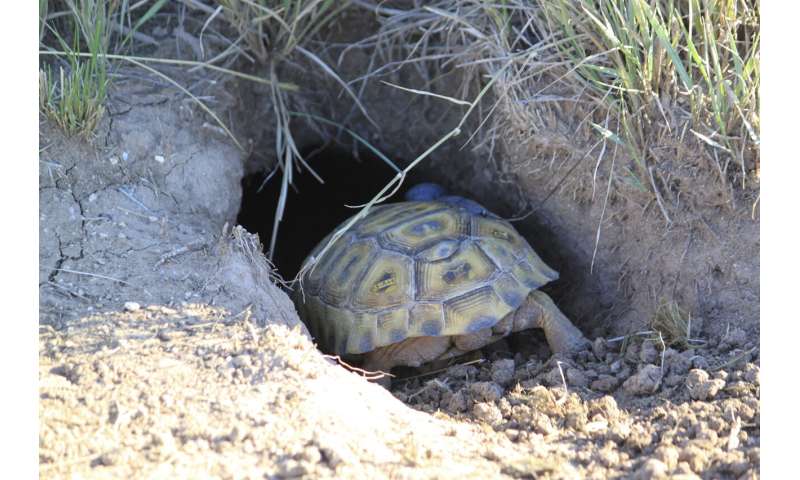
An endangered Bolson tortoise checks out a burrow after being released on Ted Turner's Armendaris Ranch in Engle, N.M., on Friday, Sept. 22, 2023. The tortoises were placed on the endangered species list in 1979 and the U.S. Fish and Wildlife Service is planning to begin crafting a recovery plan for the species. Credit: AP Photo/Susan Montoya Bryan
The species was unknown to science until the late 1950s and has never been extensively studied.
"Each and every day we're learning more and more about the Bolson tortoise's natural history," Phillips said.
The goal is to build a robust captive population that can be used as a source for future releases into the wild—both in the U.S. and Mexico. That work will include getting state and federal permits to release tortoises outside of the enclosures on Turner lands.
Those released Friday hit the ground crawling, wandering through clumps of grass and around desert scrub as the Fra Cristobal mountain range loomed in the distance.
It made for a perfect scene as one of the tortoises headed off toward the western edge of the pen, its shadow trailing behind. It was a moment that Wiese and her team have been working toward for years.
"We are not in the business of making pets," she said. "We're in the business of making wild animals and that means you have to let them go."
© 2023 The Associated Press. All rights reserved. This material may not be published, broadcast, rewritten or redistributed without permission.




















